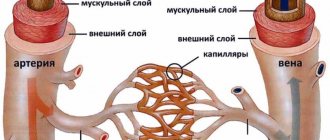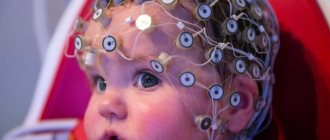Symptoms
Symptoms of post-traumatic encephalopathy are similar to those of other organic brain lesions and can be combined into syndromic groups. The most common are cephalgic, vestibulo-coordinator syndromes, cognitive decline, mental and psychological disorders. Also, quite often, as a result of injuries, epileptic seizures can occur. In this case, we are talking about the so-called symptomatic epilepsy, which, in the case of a single manifestation, is better called post-traumatic epilepsy.
Diagnosis of the disease requires mandatory confirmation using neuroimaging research methods. It is very important to have at least 1 MRI image, which can show the slightest changes in the substance of the brain.
Traumatic encephalopathy
The clinical picture is usually represented by several syndromes, varying in severity. During diagnosis, the leading syndrome is determined. With the asthenic variant, rapid fatigue, exhaustion, emotional lability, and polymorphic vegetative symptoms are observed. Patients have difficulty performing daily work, experience drowsiness, and headaches. Avoid noisy companies, long-term stress, and trips. The hypersthenic variant of the syndrome is characterized by increased irritability, sensitivity to external influences, and emotional instability. With hyposthenic syndrome, weakness, lethargy, and apathy predominate.
Patients with severe vegetative-dystonic syndrome complain of transient episodes of high or low blood pressure, rapid heartbeat, and sensitivity to cold and heat. Characterized by endocrine disruptions (changes in the menstrual cycle, impotence), excessive sweating, hypersalivation, dry skin and mucous membranes. In the syndrome of impaired cerebrospinal fluid dynamics, post-traumatic hydrocephalus is often detected - excessive accumulation of fluid in the cerebrospinal fluid spaces, accompanied by bursting headaches, nausea, vomiting, dizziness, gait disturbances, and mental retardation.
With pathopsychological syndrome, neurosis-like disorders develop - depression, hypochondria, anxiety, fears, obsessive thoughts and actions. With the subpsychotic variant, hypomania, deep depression, and paranoia (delusional ideas) are formed. Cognitive impairment is manifested by decreased memory, difficulty concentrating and performing intellectual tasks. With a mild course, fatigue is noticeable during mental stress, and dynamic fluctuations in performance. In moderate cases, it is difficult to perform complex tasks, but everyday adaptation is preserved. In severe cases, patients need care and are not independent.
For cerebral focal syndrome, motor disturbances (paralysis, paresis), changes in sensitivity (anesthesia, hypoesthesia), symptoms of damage to the facial, auditory, and ocular nerves, and cortical focal disorders are typical. Patients suffer from hearing loss, strabismus, and diplopia. Possible impairments in writing, counting, speech, and fine motor skills. Post-traumatic epilepsy develops with simple and complex partial, secondary generalized seizures. Convulsive paroxysms are accompanied by dysphoria - irritability, anger, aggressiveness.
Treatment
Treatment of post-traumatic encephalopathy should be aimed at neuroprotection (protection of nerve cells from negative factors), normalization of blood circulation processes, as well as restoration of all cognitive functions and metabolism of brain cells (nootropic therapy). Symptomatic treatment is also important, especially in the presence of hydrocephalus syndrome (specific drugs that relieve cerebral edema are required, such as diacarb, a glycerin mixture), epilepsy (a good selection of antiepileptic drugs and their doses is required).
Courses of such complex therapy, depending on the severity of the manifestations of post-traumatic encephalopathy, should be carried out 1-2 times a year. The most commonly used neuroprotective agents are gliatilin (generic Cerepro), Actovegin, Mexidol, nootropic therapy currently includes the group of racetams (most often the well-known drug piracetam), as well as drugs such as phenotropil, pantogam (especially in the presence of symptomatic epilepsy) and others medicines. In addition to standard drug therapy, in the presence of paresis and other motor disorders, techniques such as exercise therapy and massage are important.
Features of manifestation
The disease does not develop immediately and depends on how much and how the brain tissue has changed. Cicatricial, degenerative, dystrophic and atrophic changes occur.
The degree of their severity is influenced by the location and severity of the injury, the patient’s age, as well as whether he has vascular problems, alcohol consumption or other chronic intoxication.
The most striking manifestations of a disease of post-traumatic origin include:
- Headache in combination with dizziness, insomnia, weakness and increased fatigue, decreased performance and emotional lability. A person is enraged by even weak stimuli - dim light, low sound. Hypochondria and depression are possible.
- The risk of developing psychopathic-like states is increased even when the general condition gradually improves. If there were already psychopathic character traits, they are strengthened and sharpened. The mood fluctuates, up to aggressive, angry attacks, and there may be an increased craving for litigiousness.
- Affective disorders. The person becomes angry, irritable, or falls into the opposite state - euphoria. If uncriticality, lightness of judgment and disinhibition of drives progress, alcoholism may develop.
- Intellectual-mnestic failures in severe cases threaten disability. The sick person finds himself unable to cope with professional responsibilities due to deterioration of attention, memory, thinking, and loss of the ability to control and predict his own actions.
However, the consequences of encephalopathy are not limited to psycho-emotional disorders. The following syndromes often develop:
- hypertensive-hydrocephalic - increased intracranial pressure causes vomiting and headache, and also provokes paroxysmal autonomic disorders;
- episyndrome - during epileptic seizures, a person may experience convulsions and lose consciousness;
- post-traumatic parkinsonism - it threatens if the injured brain has experienced prolonged hypoxia, manifested by a steady increase in muscle tone and inactivity due to stiffness;
- Post-traumatic vestibulopathy can be recognized by dizziness, nausea, vomiting, unsteadiness, and difficulty maintaining balance.
Focal neurological symptoms, pyramidal syndrome, impaired sense of smell, strabismus, and paralysis of the facial muscles may occur.
ICD 10
Post-traumatic encephalopathy is most often coded T90.5 as a consequence of intracranial damage. Additionally, G93.8 (other specified brain pathologies) is also used. The diagnosis must indicate the damage and its type. For example, according to ICD 10, post-traumatic encephalopathy can be caused by a bruise of varying severity, diffuse axonal damage, and so on. The diagnosis also indicates the date, and the syndromic part describes the manifestations. It must be said that a concussion does not provoke consequences. In this case, post-traumatic encephalopathy can only be described in the presence of necessarily documented multiple concussions. It can manifest itself as the only or leading syndrome. In this case, according to the ICD, post-traumatic encephalopathy is coded under G91.
Diagnostic measures
They are based on a very careful collection of anamnestic data that may indicate the presence of a TBI in the past. Post-traumatic encephalopathy is confirmed by CT or MRI. During these studies, the specialist receives detailed information about diffuse or focal changes in the brain matter. At the same time, differentiated diagnostics are carried out to exclude other pathologies of the central nervous system, which are accompanied by similar symptoms. Electroencephalography can be used as an additional study. It allows you to identify the localization of the pathological focus of epileptic activity.
Clinical picture
Symptoms mainly depend on the size of the lesion and location. If post-traumatic encephalopathy is accompanied by diffuse changes, then the manifestations will be more pronounced. Typically, the following symptoms are observed:
- Neuro-asthenic syndrome caused by weakening of the nervous system.
- Involuntary rapid twitching of the pupils (nystagmus).
- Constant throbbing pain in the head caused by disturbances in lymph circulation. Conventional analgesics do not help.
- Dizziness, especially during physical overexertion.
- Sleep disorder. Post-traumatic encephalopathy is accompanied by insomnia or interrupted sleep. In this regard, there is a need to take sleeping pills daily, which, in turn, adversely affects the nervous system.
- Emotional lability is a violation of control over behavior. A person may experience unreasonable aggression towards others.
- Decreased intellectual level, memory impairment. These symptoms are especially characteristic of those who engage in mental work.
- Depressive states. As a rule, they develop as a result of a person’s awareness of his powerlessness over the disease.
- Epileptic seizures. They are caused by damage to certain brain areas and the formation of foci of painful activity.
It should be noted that the above symptoms appear several months or years after the incident.
Causes and development of pathology
Post-traumatic encephalopathy is usually a consequence of TBI. If we talk about the development mechanism, then we should distinguish 5 stages:
- Direct damage to neural tissue (usually the temporal and frontal lobes) at the time of exposure.
- Change in blood supply to the brain due to swelling.
- Disturbances in the circulation of cerebrospinal fluid (CSF) due to compression of the ventricles.
- Replacement of nerve cells with connective tissue due to lack of regeneration, adhesions and scars form.
- A pathological response of the body’s defense system, as a result of which the immune system begins to perceive its own nerve cells as foreign (autoneurosensitization).
Read also
Swelling of the legs
Causes of Swelling in the Legs The legs are common sites for swelling due to the effect of gravity on the fluids in the human body.
However, fluid retention is not the only cause of leg swelling. Injuries… Read more
Atherosclerosis
What is atherosclerosis Atherosclerosis is a narrowing of the arteries caused by the formation of plaque. As a person gets older, fat and cholesterol can accumulate in the arteries and form plaque. Accumulation…
More details
Hemorrhagic stroke
Hemorrhagic stroke is a type of acute cerebrovascular accident, which is characterized by the effusion of blood into the brain substance with the development of neurological deficit, often leading...
More details
Transient ischemic attack (TIA)
What it is? Why is this happening? Is this condition dangerous? What to do if doctors make such a diagnosis? These questions are always asked by patients who come to see a neurologist. According to classification...
More details
Chronic cerebral ischemia
One of the most common diagnoses at an appointment with a neurologist for patients in the older age group is chronic cerebral circulatory failure, discirculatory encephalopathy. According to…
More details
Behavioral disorders
Characteristic of post-traumatic encephalopathy of the 2nd degree and more severe forms of the disease. There are:
- phobic disorders , and more often than others, the development of social phobia is noted, which often leads to complete social isolation;
- personality changes: the patient’s behavior becomes liberated, does not correspond to generally accepted social norms, he makes vulgar, inappropriate jokes, sexual disinhibition, childishness, boasting, foul language, demonstrativeness, mannerisms, etc. are characteristic;
- a tendency to hot temper, aggression , a person completely or partially loses control over his actions, therefore episodes of physical and sexual violence are not excluded.
Often notes ostentatious, demonstrative religiosity , which is associated with episodic psychosis or hallucinosis of similar content. A person constantly talks about higher or otherworldly forces, believes in the possibility of punishment for committed offenses.











